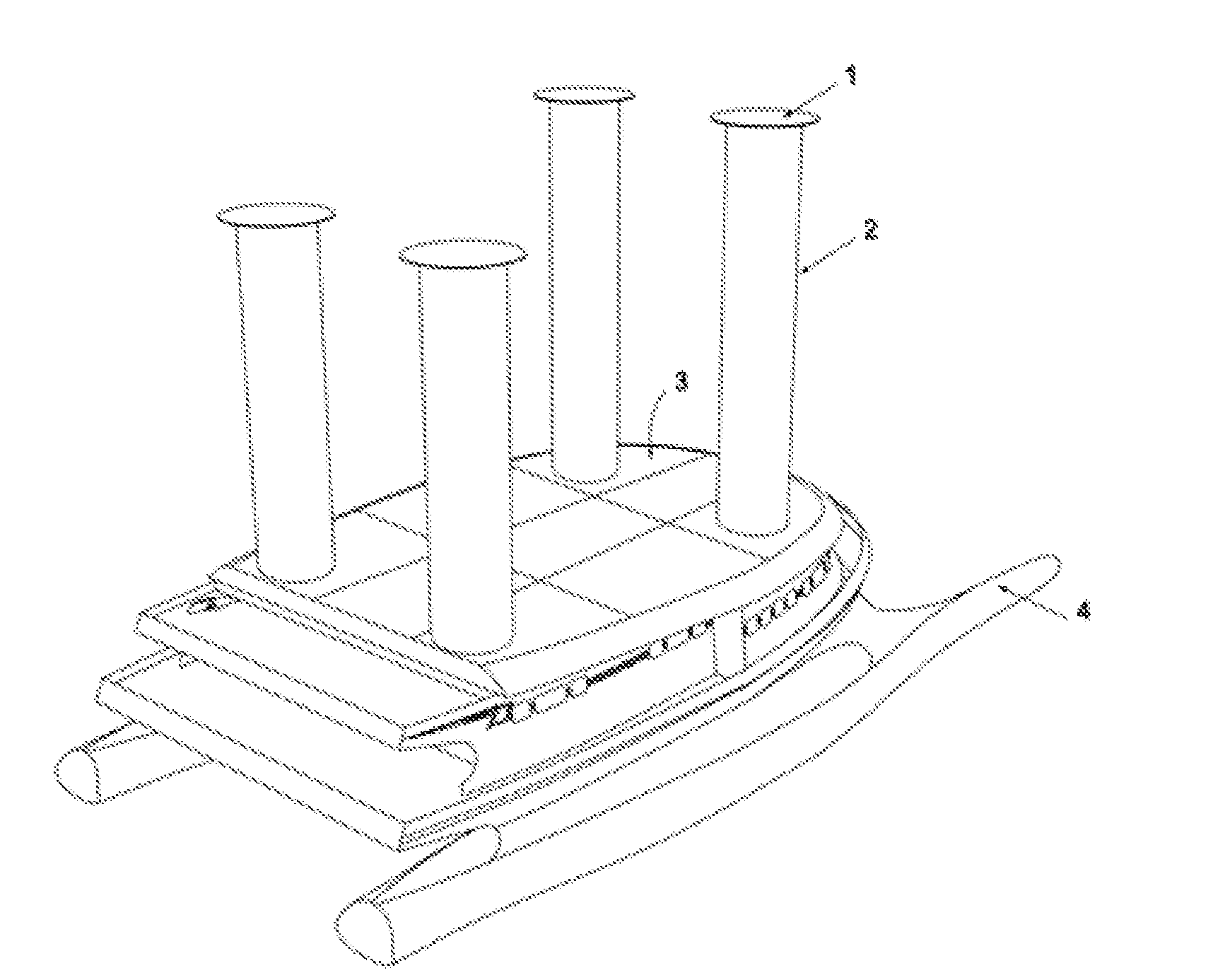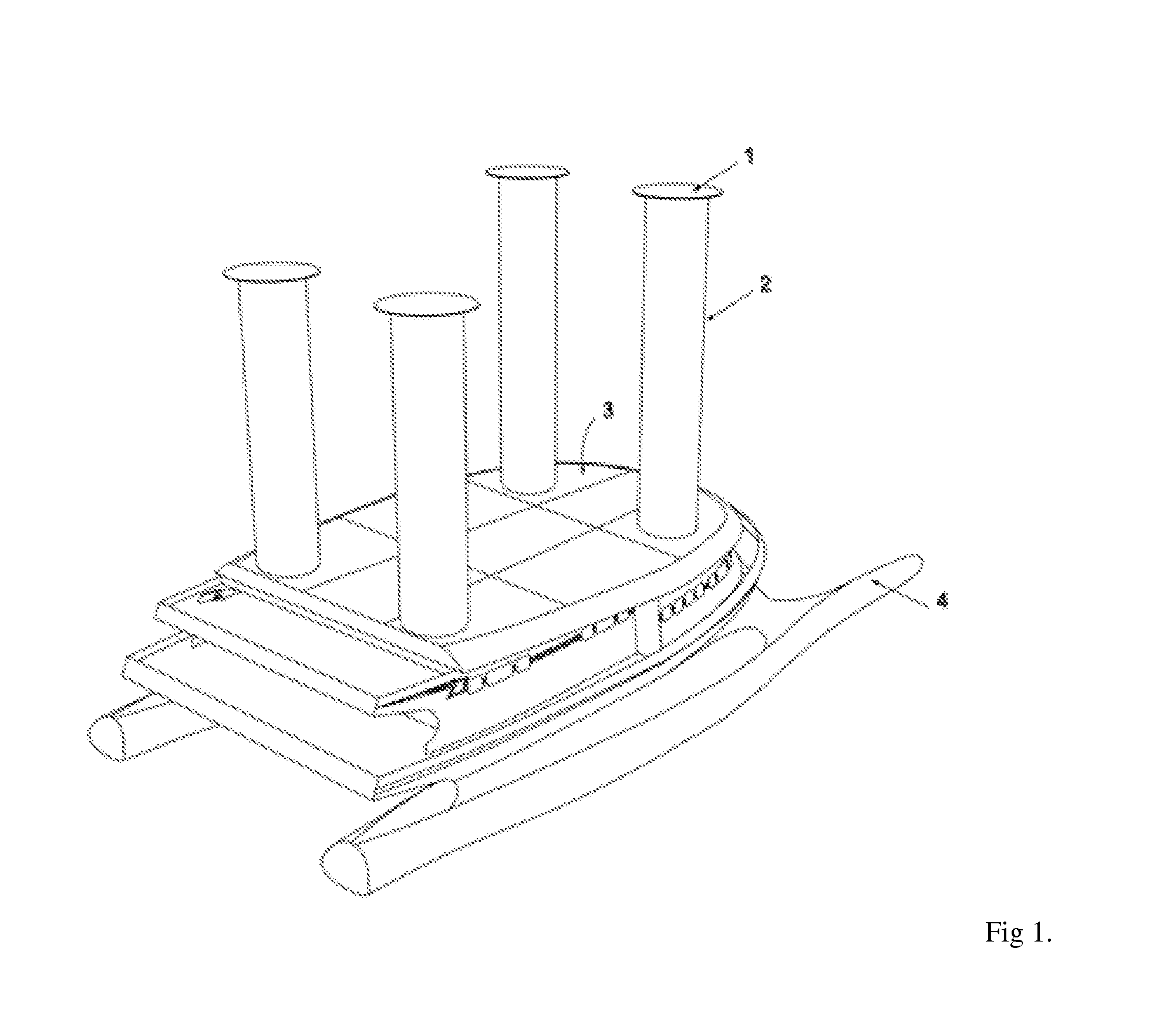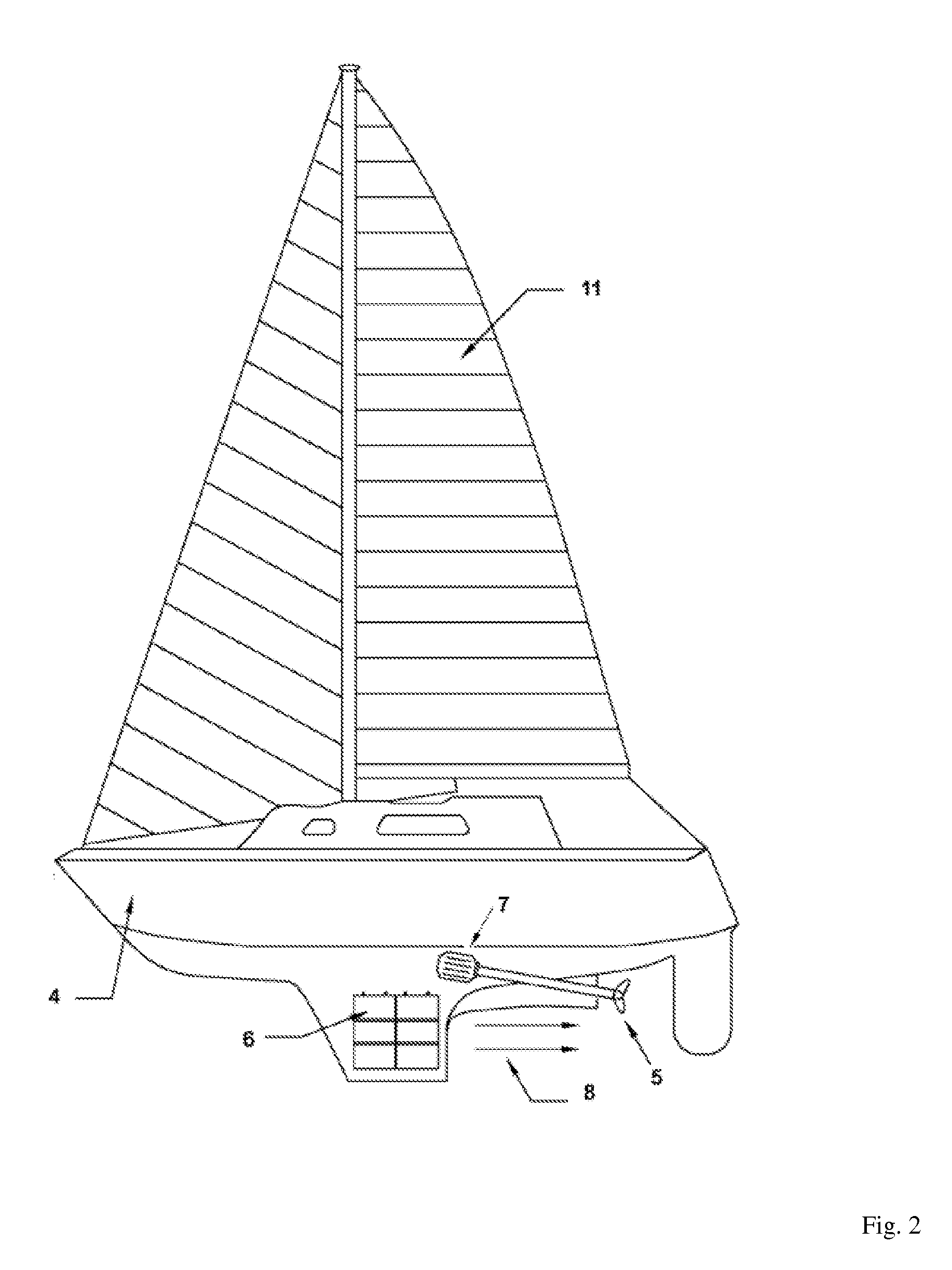Process for harvesting, storing, and using renewable energy to propel and power boats and ships, and maximize their average speed
- Summary
- Abstract
- Description
- Claims
- Application Information
AI Technical Summary
Benefits of technology
Problems solved by technology
Method used
Image
Examples
Embodiment Construction
[0042]FIG. 1 and FIG. 3, show a catamaran type of marine vessel with four vertical Flettner rotors 2, to which a disc 1 is attached on the top of each rotor. These Flettner rotors 2 are used as means of a driving force using the Magnus principle to push the marine vessel's hull 4 forward in the water in a desired direction, much like the manner in which a sail acts as a driving force on a sailboat FIG. 2. Regenerative propellers 5 are located on the side of each hull of the catamaran or under a mono hull to harvest energy from the flowing water 8 when the marine vessel's hull 4 is in forward motion due to the driving force from the wind on the Flettner rotors 2. Solar panels augment the energy produced for vessel's use. The combined excess energy is stored by an energy management system (EMS) into a battery bank 6, or in the form of fuel cells located at the bottom of the marine vessel near the keel. The dense batteries 6 in the keel also serve to lower the center of gravity of the ...
PUM
 Login to View More
Login to View More Abstract
Description
Claims
Application Information
 Login to View More
Login to View More - R&D
- Intellectual Property
- Life Sciences
- Materials
- Tech Scout
- Unparalleled Data Quality
- Higher Quality Content
- 60% Fewer Hallucinations
Browse by: Latest US Patents, China's latest patents, Technical Efficacy Thesaurus, Application Domain, Technology Topic, Popular Technical Reports.
© 2025 PatSnap. All rights reserved.Legal|Privacy policy|Modern Slavery Act Transparency Statement|Sitemap|About US| Contact US: help@patsnap.com



